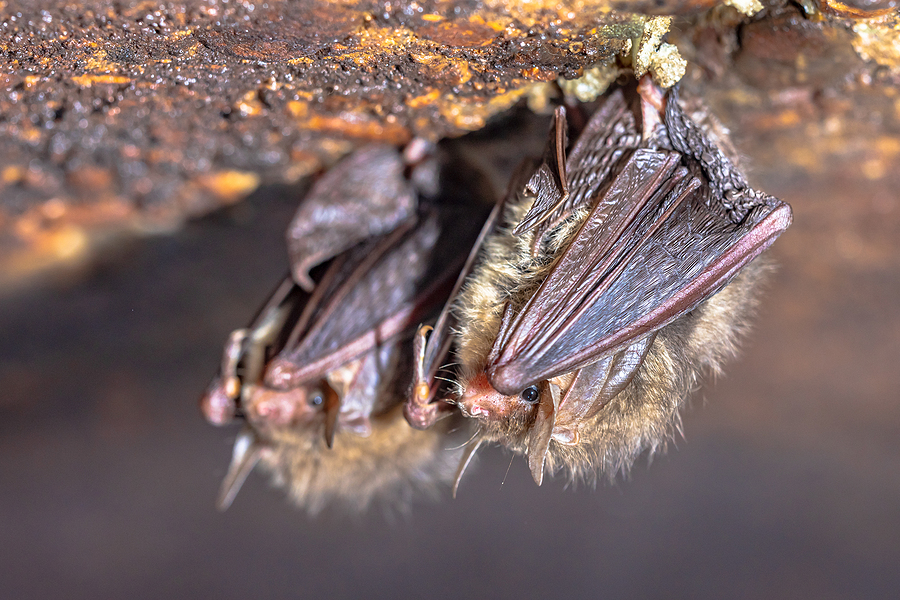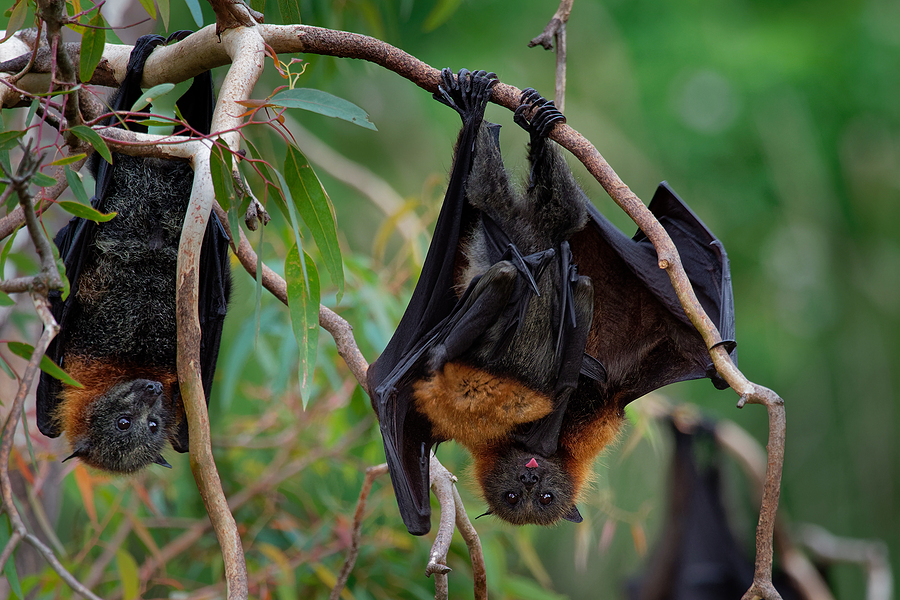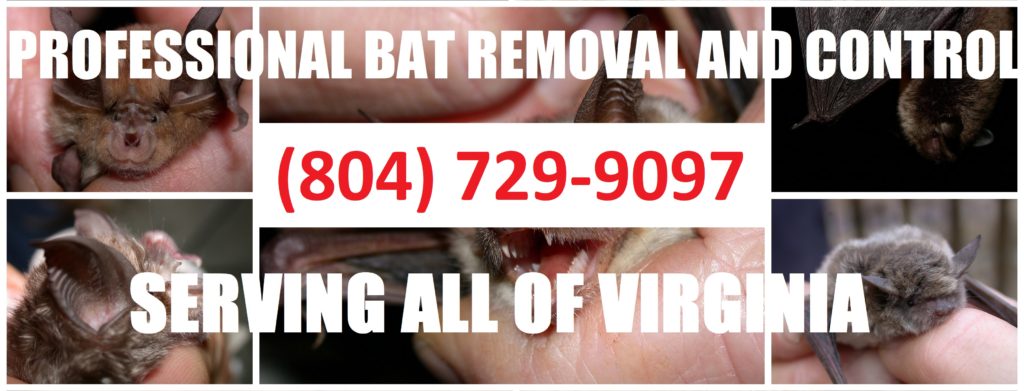Did you know there are two main species of bats in the world? It’s true! All bats can be put into one of two categories: Microchiroptera or Megachiroptera. These are colloquially known as “megabats” and “microbats.” Continue reading to learn the main differences and distinctions between them, including their appearance, diet, habitat, and more!

Microchiroptera Vs. Megachiroptera Bats
Microbats
The above image are two Brown Long-Eared Bats, which is a type of microbat species. Microchiroptera, or microbats, are small in size and have large ears. Most range between 3 and 16 inches in length, and many are small enough to fit through a gap as tiny as 3/8th of an inch. They are echolocating mammals, meaning they use a built-in, biological sonar system, which emits ultrasonic sounds that bounce of nearby objects and return to the bat. Micros are not blind, but echolocation helps them dart and dive for prey more accurately at night.
As for diet, micros primarily eat insects; but some larger species eat small fish, rodents, birds, and amphibians. Three particular species consumes the blood of other animals, mainly livestock and birds. These include Common Vampire bats (Desmodus rotundus), hairy-legged vampire bats (Diphylla ecaudata), and white-winged vampire bats. But do not worry; they do not drink human blood!
When it comes to habitat, microbats live in moderate climates, and typically roost in hollowed trees, abandoned mines, caves, and even in residential and commercial buildings (especially attics!).
Megabats

Megachiroptera are much larger in size, and are also known as “Flying Foxes”, “Fruit Bats”, and “Old World Fruit Bats.” This is mainly due to their frugivorous and nectarivorous diets, which mainly consists of fruit, nectar, and pollen. Some species are known to eat some insects, but their diet primarily consists of the nectar and pollen of fruit and flowers. Because of this, this suborder of bats do not use nor retain echolocating abilities. They do, however, have a keen sense of smell that helps them locate food sources, as well as, adapted teeth that are strong enough to bite through fruit rinds.
As for appearance, it is easy to differentiate a mega from a micro. Not only do fruit bats have large eyes and visual cortexes, they also lack a tail. However, Microbats lack the claw at the second finger of the forelimb that megabats do have. Megabats live in hot, tropical, and subtropical regions of the world. You are not likely to see wild fruit bats living in the forests of the U.S. Midwest. They prefer hot, humid, damp environments, such as rain forests and shorelines, and they generally make their roost in trees, shrubs, and caves.
Do you need to get rid of bats in the attic or around your house? Contact Virginia Bat Pros at 804-729-9097 for prompt and professional bat removal and control services in Virginia, including Alexandria, Chesapeake, Fredericksburg, Manassas, Norfolk, and all surrounding areas.
You Might Also Like:
The Difference Between a Wild Bat and a Nuisance Bat
4 Reasons Why You Should Never Ignore a Nuisance Bat Problem
Which Bats are Native to the State of Virginia?

